-
Executive Summary
-
Market Introduction
-
2.1
-
Market Definition
-
Scope of the
-
Study
-
List of Assumptions
-
Markets Structure
-
3
-
Market Research Methodology
-
Research
-
Process
-
Primary Research
-
Secondary Research
-
3.4
-
Market Size Estimation
-
Forecast Model
-
Market Dynamics of the Global Sterilant Market
-
Introduction
-
4.2
-
Drivers
-
Restraints
-
Opportunities
-
Challenges
-
Trends/End-Use Industry
- Raw Material Suppliers
- Manufacturers/Producers
- Distributors/Retailers/Wholesalers/E-Commerce
- End Users
- Bargaining
- Bargaining Power
- Threat of Substitutes
- Intensity of Rivalry
-
5
-
Market Factor Analysis of the Global Sterilant Market
-
5.1
-
Supply Chain Analysis
-
5.2
-
Porter’s Five Forces Analysis
-
5.2.1
-
Threat of New Entrants
-
Power of Buyers
-
of Suppliers
-
5.3
-
Pricing Analysis
-
Global Sterilant Market,
-
by Product Type
-
Introduction
-
Ethylene
- Market
- Market Estimates
-
Oxide
-
Estimates & Forecast, 2020−2027
-
& Forecast, by Region, 2020−2027
-
Glutaraldehyde
- Market Estimates
- Market Estimates &
-
& Forecast, 2020−2027
-
Forecast, by Region, 2020−2027
-
Pure Chlorine
- Market Estimates
- Market Estimates &
-
& Forecast, 2020−2027
-
Forecast, by Region, 2020−2027
-
Hydrogen Peroxide
- Market
- Market Estimates
-
Gas
-
Estimates & Forecast, 2020−2027
-
& Forecast, by Region, 2020−2027
-
Peracetic
- Market
- Market Estimates
-
Acid
-
Estimates & Forecast, 2020−2027
-
& Forecast, by Region, 2020−2027
-
Others
- Market Estimates
- Market Estimates &
-
& Forecast, 2020−2027
-
Forecast, by Region, 2020−2027
-
Global Sterilant
-
Market, by Process
-
Introduction
- Market Estimates & Forecast, 2020−2027
- Market Estimates & Forecast, by Region, 2020−2027
- Market Estimates & Forecast,
- Market Estimates & Forecast, by Region, 2020−2027
-
7.2
-
Steam Sterilization
-
7.3
-
Ethylene Oxide Sterilization
-
Others
- Market Estimates & Forecast,
- Market Estimates & Forecast, by Region, 2020−2027
-
Global Sterilant Market, by End-Use Industry
-
8.1
-
Introduction
-
Food & Beverages
- Market
-
8.2.1
-
Market Estimates & Forecast, 2020−2027
-
Estimates & Forecast, by Region, 2020−2027
-
Healthcare
- Market Estimates & Forecast, 2020−2027
-
8.3.2
-
Market Estimates & Forecast, by Region, 2020−2027
-
8.4
-
Pulp & Paper
-
8.5
-
Wastewater Treatment
-
8.6
-
Agriculture
-
8.7
-
Others
-
9.
-
Market Estimates & Forecast, 2020−2027
-
Market Estimates & Forecast, by Region, 2020−2027
-
Market Estimates & Forecast, 2020−2027
-
Market Estimates & Forecast, by Region, 2020−2027
-
Market Estimates & Forecast, 2020−2027
-
Market Estimates & Forecast, by Region, 2020−2027
-
Market Estimates & Forecast, 2020−2027
-
Market Estimates & Forecast, by Region, 2020−2027
-
Global Sterilant Market, by Region
-
Introduction
-
North America
- Market Estimates &
- Market Estimates & Forecast,
- Market Estimates &
- Market Estimates &
-
Forecast, 2020−2027
-
by Product Type, 2020−2027
-
Forecast, by Process, 2020−2027
-
Forecast, by End-Use Industry, 2020−2027
-
9.2.5
-
US
-
9.2.5.1
-
Market Estimates & Forecast, 2020−2027
-
Type, 2020−2027
-
9.2.5.3
-
Market Estimates & Forecast, by Process, 2020−2027
-
& Forecast, by End-Use Industry, 2020−2027
-
9.2.6
-
Canada
-
9.2.6.1
-
Market Estimates & Forecast, 2020−2027
-
by Product Type, 2020−2027
-
& Forecast, by End-Use Industry, 2020−2027
-
& Forecast, by Product Type, 2020−2027
-
9.3.5.4
-
Market Estimates
-
Market Estimates & Forecast,
-
Market Estimates & Forecast, by Process, 2020−2027
-
Market Estimates
-
Europe
- Market Estimates & Forecast, 2020−2027
- Market Estimates & Forecast, by Product Type, 2020−2027
- Market Estimates & Forecast, by Process, 2020−2027
- Market Estimates & Forecast, by End-Use Industry,
- Germany
-
Market Estimates & Forecast, by End-Use Industry, 2020−2027
-
9.3.6.1
-
Market Estimates & Forecast, 2020−2027
-
Type, 2020−2027
-
9.3.6.3
-
France
-
Market Estimates & Forecast, by Product
-
Market Estimates & Forecast, by Process, 2020−2027
-
Forecast, by End-Use Industry, 2020−2027
-
& Forecast, 2020−2027
-
& Forecast, by Process, 2020−2027
-
& Forecast, by Product Type, 2020−2027
-
9.3.8.4
-
Market Estimates &
-
Italy
-
Market Estimates
-
Market Estimates & Forecast, by Product Type, 2020−2027
-
Market Estimates
-
Market Estimates & Forecast, by End-Use Industry,
-
Spain
-
Market Estimates & Forecast, 2020−2027
-
Market Estimates
-
Market Estimates & Forecast, by Process,
-
Market Estimates & Forecast, by End-Use Industry, 2020−2027
-
9.3.9.1
-
Market Estimates & Forecast, 2020−2027
-
Type, 2020−2027
-
9.3.9.3
-
UK
-
Market Estimates & Forecast, by Product
-
Market Estimates & Forecast, by Process, 2020−2027
-
Forecast, by End-Use Industry, 2020−2027
-
& Forecast, 2020−2027
-
& Forecast, by Process, 2020−2027
-
Industry, 2020−2027
-
Forecast, 2020−2027
-
& Forecast, by Process, 2020−2027
-
Industry, 2020−2027
-
& Forecast, 2020−2027
-
& Forecast, by Process, 2020−2027
-
Industry, 2020−2027
-
9.4.1
-
Market Estimates & Forecast, 2020−2027
-
9.4.2
-
Market Estimates &
-
Russia
-
Market Estimates
-
Market Estimates & Forecast, by Product Type, 2020−2027
-
Market Estimates
-
Market Estimates & Forecast, by End-Use
-
Poland
-
Market Estimates &
-
Market Estimates & Forecast, by Product Type, 2020−2027
-
Market Estimates
-
Market Estimates & Forecast, by End-Use
-
Rest of Europe
-
Market Estimates
-
Market Estimates & Forecast, by Product Type, 2020−2027
-
Market Estimates
-
Market Estimates & Forecast, by End-Use
-
Asia-Pacific
-
Market Estimates & Forecast, by Product Type, 2020−2027
-
& Forecast, by Product Type, 2020−2027
-
9.4.5.3
-
Market Estimates & Forecast, by Process, 2020−2027
-
Market Estimates & Forecast, by End-Use Industry,
-
China
-
Market Estimates & Forecast, 2020−2027
-
Market Estimates
-
Market Estimates & Forecast, by Process,
-
Market Estimates & Forecast, by End-Use Industry, 2020−2027
-
9.4.6
-
India
-
9.4.6.1
-
Market Estimates & Forecast, 2020−2027
-
by Product Type, 2020−2027
-
& Forecast, by End-Use Industry, 2020−2027
-
9.4.7
-
Japan
-
9.4.7.1
-
Market Estimates & Forecast, 2020−2027
-
by Product Type, 2020−2027
-
& Forecast, by End-Use Industry, 2020−2027
-
9.4.8
-
Australia & New Zealand
-
& Forecast, by Product Type, 2020−2027
-
9.4.8.4
-
Market Estimates & Forecast,
-
Market Estimates & Forecast, by Process, 2020−2027
-
Market Estimates
-
Market Estimates & Forecast,
-
Market Estimates & Forecast, by Process, 2020−2027
-
Market Estimates
-
Market Estimates & Forecast, 2020−2027
-
Market Estimates
-
Market Estimates & Forecast, by Process,
-
Market Estimates & Forecast, by End-Use Industry, 2020−2027
-
& Forecast, by Product Type, 2020−2027
-
9.4.9.4
-
Rest of Asia Pacific
-
Market Estimates & Forecast, 2020−2027
-
Market Estimates
-
Market Estimates & Forecast, by Process,
-
Market Estimates & Forecast, by End-Use Industry, 2020−2027
-
Middle East & Africa
-
9.5.1
-
Market Estimates & Forecast, 2020−2027
-
9.5.2
-
Market Estimates & Forecast, by Product Type, 2020−2027
-
9.5.3
-
Market Estimates & Forecast, by Process, 2020−2027
-
9.5.4
-
Market Estimates & Forecast, by End-Use Industry, 2020−2027
-
by Product Type, 2020−2027
-
& Forecast, by End-Use Industry, 2020−2027
-
9.5.6
-
Israel
-
9.5.6.1
-
Market Estimates & Forecast, 2020−2027
-
Type, 2020−2027
-
9.5.6.3
-
GCC
-
Market Estimates & Forecast, 2020−2027
-
Market Estimates & Forecast,
-
Market Estimates & Forecast, by Process, 2020−2027
-
Market Estimates
-
Market Estimates & Forecast, by Product
-
Market Estimates & Forecast, by Process, 2020−2027
-
Forecast, by End-Use Industry, 2020−2027
-
9.5.7
-
North Africa
-
9.5.7.1
-
Market Estimates & Forecast, 2020−2027
-
Type, 2020−2027
-
9.5.7.3
-
Market Estimates &
-
Market Estimates & Forecast, by Product
-
Market Estimates & Forecast, by Process, 2020−2027
-
Forecast, by End-Use Industry, 2020−2027
-
9.5.8
-
Turkey
-
Estimates & Forecast, 2020−2027
-
& Forecast, by Process, 2020−2027
-
& Forecast, 2020−2027
-
& Forecast, by Process, 2020−2027
-
9.6.1
-
Market Estimates & Forecast, 2020−2027
-
9.6.2
-
Market Estimates &
-
Market
-
Market Estimates & Forecast, by Product Type, 2020−2027
-
Market Estimates
-
Market Estimates & Forecast, by End-Use Industry,
-
Rest of Middle East & Africa
-
Market Estimates
-
Market Estimates & Forecast, by Product Type, 2020−2027
-
Market Estimates
-
Market Estimates & Forecast, by End-Use Industry,
-
Latin America
-
Market Estimates & Forecast, by Product Type, 2020−2027
-
9.6.3
-
Market Estimates & Forecast, by Process, 2020−2027
-
by Product Type, 2020−2027
-
& Forecast, by End-Use Industry, 2020−2027
-
& Forecast, 2020−2027
-
9.6.6.2
-
Market Estimates & Forecast, by End-Use Industry, 2020−2027
-
Brazil
-
Market Estimates & Forecast, 2020−2027
-
Market Estimates & Forecast,
-
Market Estimates & Forecast, by Process, 2020−2027
-
Market Estimates
-
Mexico
-
Market Estimates
-
Market Estimates & Forecast, by Product Type, 2020−2027
-
by Process, 2020−2027
-
9.6.6.4
-
Market Estimates & Forecast,
-
Market Estimates & Forecast, by End-Use Industry, 2020−2027
-
& Forecast, by Product Type, 2020−2027
-
9.6.7.4
-
Argentina
-
Market Estimates & Forecast, 2020−2027
-
Market Estimates
-
Market Estimates & Forecast, by Process,
-
Market Estimates & Forecast, by End-Use Industry, 2020−2027
-
9.6.8
-
Rest of Latin America
-
& Forecast, by Product Type, 2020−2027
-
9.6.8.4
-
Market Estimates & Forecast, 2020−2027
-
Market Estimates
-
Market Estimates & Forecast, by Process,
-
Market Estimates & Forecast, by End-Use Industry, 2020−2027
-
10.
-
Company Landscape
-
Introduction
-
Market Strategies
-
10.3
-
Key Development Analysis (Expansion/Merger & Acquisition/Joint
-
Venture/New Product Development/Agreement/Investment)
-
Company Profiles
-
Solvay
- Company Overview
- Product/Business
- Key Strategies
- SWOT Analysis
- Company Overview
- Product/Business
- Key Strategies
- SWOT Analysis
-
11.1.2
-
Financial Updates
-
Segment Overview
-
11.1.5
-
Key Developments
-
11.2
-
Deroyal
-
11.2.2
-
Financial Updates
-
Segment Overview
-
11.2.5
-
Key Developments
-
Loeffler Chemical Corporation
- Company Overview
- Product/Business
- Key Strategies
- SWOT Analysis
- Financial Updates
- Product/Business Segment Overview
- Key Strategies
- SWOT Analysis
- Company
- Financial Updates
- Key
- Key Developments
-
11.3.2
-
Financial Updates
-
Segment Overview
-
11.3.5
-
Key Developments
-
11.4
-
Evonik Industries AG
-
11.4.1
-
Company Overview
-
11.4.5
-
Key Developments
-
11.5
-
Mitsubishi Chemical Corporation
-
Overview
-
11.5.3
-
Product/Business Segment Overview
-
Strategies
-
11.5.6
-
SWOT Analysis
-
Peroxychem
- Company Overview
- Financial
- Product/Business Segment Overview
- Key Strategies
- SWOT Analysis
- Financial Updates
- Product/Business Segment Overview
- Key Strategies
- SWOT Analysis
- Financial Updates
- Product/Business Segment Overview
- Key Strategies
- SWOT Analysis
- Financial Updates
- Product/Business Segment Overview
- Key Strategies
- SWOT Analysis
- Company Overview
- Product/Business
- Key Strategies
- Key Developments
-
Updates
-
11.6.5
-
Key Developments
-
11.7
-
Ecolab
-
11.7.1
-
Company Overview
-
11.7.5
-
Key Developments
-
11.8
-
JBT Corporation
-
11.8.1
-
Company Overview
-
11.8.5
-
Key Developments
-
11.9
-
Hydrite Chemical
-
11.9.1
-
Company Overview
-
11.9.5
-
Key Developments
-
11.10
-
Enviro Tech Chemical Services, Inc.
-
11.10.2
-
Financial Updates
-
Segment Overview
-
11.10.6
-
SWOT Analysis
-
Diversey
- Company Overview
- Key
- Key Developments
-
11.11.2
-
Financial Updates
-
11.11.3
-
Product/Business Segment Overview
-
Strategies
-
11.11.6
-
SWOT Analysis
-
ACURO ORGANICS LIMITED
- Company Overview
- Financial Updates
- Key Developments
- SWOT Analysis
-
11.12.3
-
Product/Business Segment Overview
-
11.12.4
-
Key Strategies
-
Airedale
- Company
- Financial Updates
- Product/Business Segment Overview
- Key Developments
- SWOT Analysis
-
Chemical
-
Overview
-
11.13.4
-
Key Strategies
-
Conclusion
-
LIST OF TABLES
-
Table 1
-
Global Sterilant Market, by Region, 2020−2027
-
Table 2
-
North America: Sterilant Market, by Country, 2020−2027
-
Table
-
Europe: Sterilant Market, by Country, 2020−2027
-
Asia-Pacific: Sterilant Market, by Country, 2020−2027
-
Middle East & Africa: Sterilant Market,
-
by Country, 2020−2027
-
Latin America:
-
Sterilant Market, by Country, 2020−2027
-
Global
-
Sterilant Product Type Market, by Regions, 2020−2027
-
Table 8
-
North America: Sterilant Product Type Market, by Country, 2020−2027
-
Europe: Sterilant Product Type Market, by
-
Country, 2020−2027
-
Table10 Asia-Pacific: Sterilant
-
Product Type Market, by Country, 2020−2027
-
Table11
-
Middle East & Africa: Sterilant Product Type Market, by Country, 2020−2027
-
Table12 Latin America: Sterilant Product Type Market,
-
by Country, 2020−2027
-
Table13 Global Sterilant
-
Process Market, by Regions, 2020−2027
-
Table14 North
-
America: Sterilant by Process Market, by Country, 2020−2027
-
Table15
-
Europe: Sterilant Process Market, by Country, 2020−2027
-
Table16
-
Asia-Pacific: Sterilant Process Market, by Country, 2020−2027
-
Table17 Middle East & Africa: Sterilant Process Market,
-
by Country, 2020−2027
-
Table18 Latin America:
-
Sterilant Process Market, by Country, 2020−2027
-
Table19
-
Global Sterilant End-Use Industry Market, by Regions, 2020−2027
-
Table20
-
North America: Sterilant End-Use Industry Market, by Country, 2020−2027
-
Table21 Europe: Sterilant End-Use Industry Market,
-
by Country, 2020−2027
-
Table22 Asia-Pacific:
-
Sterilant End-Use Industry Market, by Country, 2020−2027
-
Table23
-
Middle East & Africa: Sterilant End-Use Industry Market, by Country, 2020−2027
-
Table24 Latin America: Sterilant End-Use Industry
-
Market, by Country, 2020−2027
-
Table25 Global
-
Product Type Market, by Region, 2020−2027
-
Table26
-
Global Process Market, by Region, 2020−2027
-
Table27
-
Global End-Use Industry Market, by Region, 2020−2027
-
Table28
-
North America: Sterilant Market, by Country
-
Table29
-
North America: Sterilant Market, by Product Type
-
Table30
-
North America: Sterilant Market, by Process
-
Table31
-
North America: Sterilant Market, by End-Use Industry
-
Table32
-
Europe: Sterilant Market, by Country
-
Table33 Europe:
-
Sterilant Market, by Product Type
-
Table34 Europe: Sterilant
-
Market, by Process
-
Table35 Europe: Sterilant Market, by End-Use
-
Industry
-
Table36 Asia-Pacific: Sterilant Market, by Country
-
Table37 Asia-Pacific: Sterilant Market, by Product
-
Type
-
Table38 Asia-Pacific: Sterilant Market, by Process
-
Table39 Asia-Pacific: Sterilant Market, by End-Use Industry
-
Table40 Middle East & Africa: Sterilant Market, by Country
-
Table41 Middle East & Africa: Sterilant Market,
-
by Product Type
-
Table42 Middle East & Africa: Sterilant
-
Market, by Process
-
Table43 Middle East &
-
Africa: Sterilant Market, by End-Use Industry
-
Table44 Latin
-
America: Sterilant Market, by Country
-
Table45 Latin
-
America: Sterilant Market, by Product Type
-
Table46 Latin
-
America: Sterilant Market, by Process
-
Table47 Latin
-
America: Sterilant Market, by End-Use Industry
-
LIST OF FIGURES
-
Global Sterilant Market Segmentation
-
FIGURE
-
Forecast Research Methodology
-
Five Forces
-
Analysis of the Global Sterilant Market
-
Value Chain
-
of the Global Sterilant Market
-
Share of the Global Sterilant
-
Market in 2020, by Country (%)
-
Global Sterilant Market,
-
Global Sterilant Market Size, by Product
-
Type, 2020
-
Share of the Global Sterilant Market, by
-
Product Type, 2020−2027
-
Global Sterilant Market
-
Size, by Process, 2020
-
Share of the Global Sterilant Market,
-
by Process, 2020−2027
-
Global Sterilant Market Size,
-
by End-Use Industry, 2020
-
Share of the Global Sterilant Market,
-
by End-Use Industry, 2020−2027

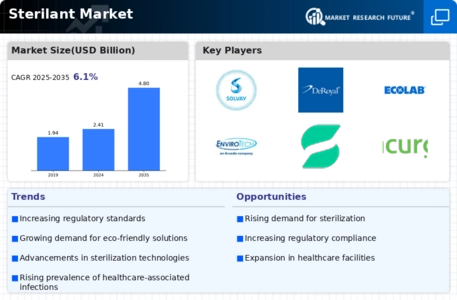
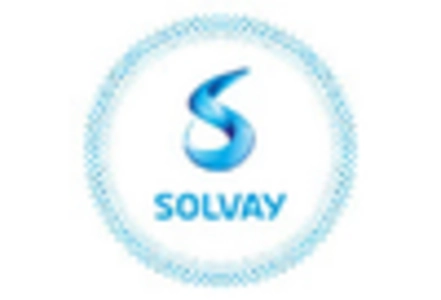
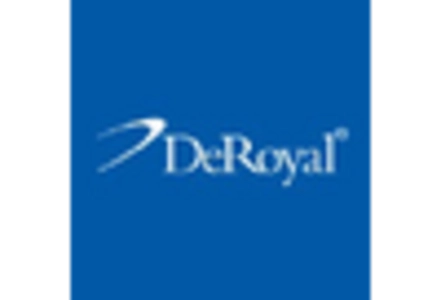
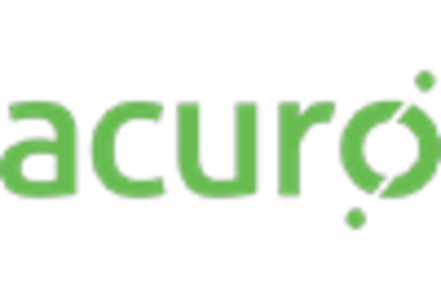
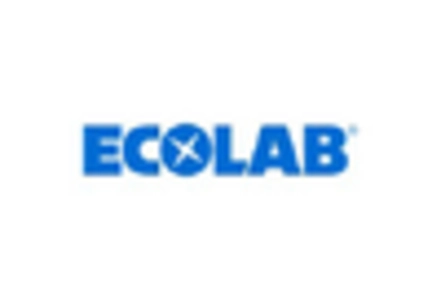



Leave a Comment